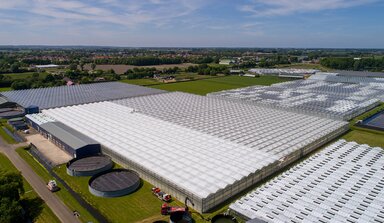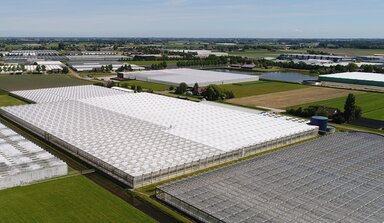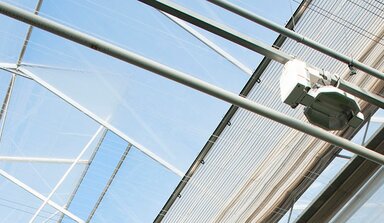Coatings have no effect on day length sensitivity
Short day plants flower during short days; long day plants flower during long days. It is becoming increasingly clear that light colour plays an important role in driving this effect. Coatings however, have no impact on this.
Many plants are naturally sensitive to day length. They flower only when the days become longer or indeed shorter. This is a complex phenomenon for the horticultural sector because if you want the plant to flower at a different time than it would in nature, artificial measures such as shading or extra lighting are required. In many crops the day length sensitivity has disappeared through breeding but for a number of species this has not been possible. Well-known examples of short day plants are poinsettia, chrysanthemum and kalanchoe. On the other hand gysophilia, trachelium and carnation are typical long day plants.
Clock and sensor measure day length
In order to measure day length the plant needs a clock and a sensor. This clock is the internal biological clock that regulates the many processes that take place at a certain point in the day or night. Every day the clock is reset by the sunrise. The plant notices that it becomes light via ‘sensors’. These sensors are light-sensitive pigments. They exist in different forms: Phytochromes are sensitive to red and far red light; cryptochromes to blue light. The clock ticks further and counts the number of day light hours. While it is light the plant produces a certain protein called CONSTANS. Its concentration in the cytoplasm is at its highest 10 to 12 hours after dawn. This peak in the concentration is the trigger for the cells to produce a messenger substance which is sent from the leaf (where the sensors are positioned) to the growth point. When it arrives here the substance gives the signal for flower formation and its further development.
Stabilisation
If it becomes dark again within just 10 to 12 hours after sunrise (so a short day) the concentration of CONSTANS doesn’t reach a peak because it quickly breaks down again in the dark. If it is still light after 10 to 12 hours phytochrome stabilises the protein. Short day- and long day plants react differently to the peak in CONSTANS. For long day plants the peak is the signal to start flowering. Conversely, for short day plants it is the signal not to flower. Apart from the length of the day, the length of the night is also important. During the night, the active form of phytochrome (which suppresses flowering) turns into an inactive form. During a long night more of the inactive form remains and this induces flowering in short day plants. A flash of red light during the night can eliminate the entire effect. Phytochrome is therefore very sensitive to red light but also to far red light. In recent years our knowledge about the regulation of short and long day plants has grown significantly as a result of DNA-technology. But this doesn’t make matters any easier. In practice, growers have developed ways to deal with the day length sensitivity and achieve flowering at the desired time. In the future, there might be more possibilities to control flowering as our understanding about the influence of light colours grows.
Coatings for day length sensitive crops
The coatings ReduHeat, ReduSol, ReduFuse and ReduFuse IR don’t affect the colour spectrum such that the short- or long day treatments should be altered. Also they allow sufficient light across the entire spectrum to penetrate the greenhouse so that plants can produce the protein CONSTANS. New developments are coatings that reflect a part of the colour spectrum, such as ReduFlex Blue. Because cryptochrome is sensitive to blue light it raises the question, can we expect any effect, certainly with long day plants. The answer is no: ReduFlex Blue doesn’t reflect all the blue light so there is still sufficient blue light to activate cryptochrome and for it to regulate the biorhythm of the plant.


